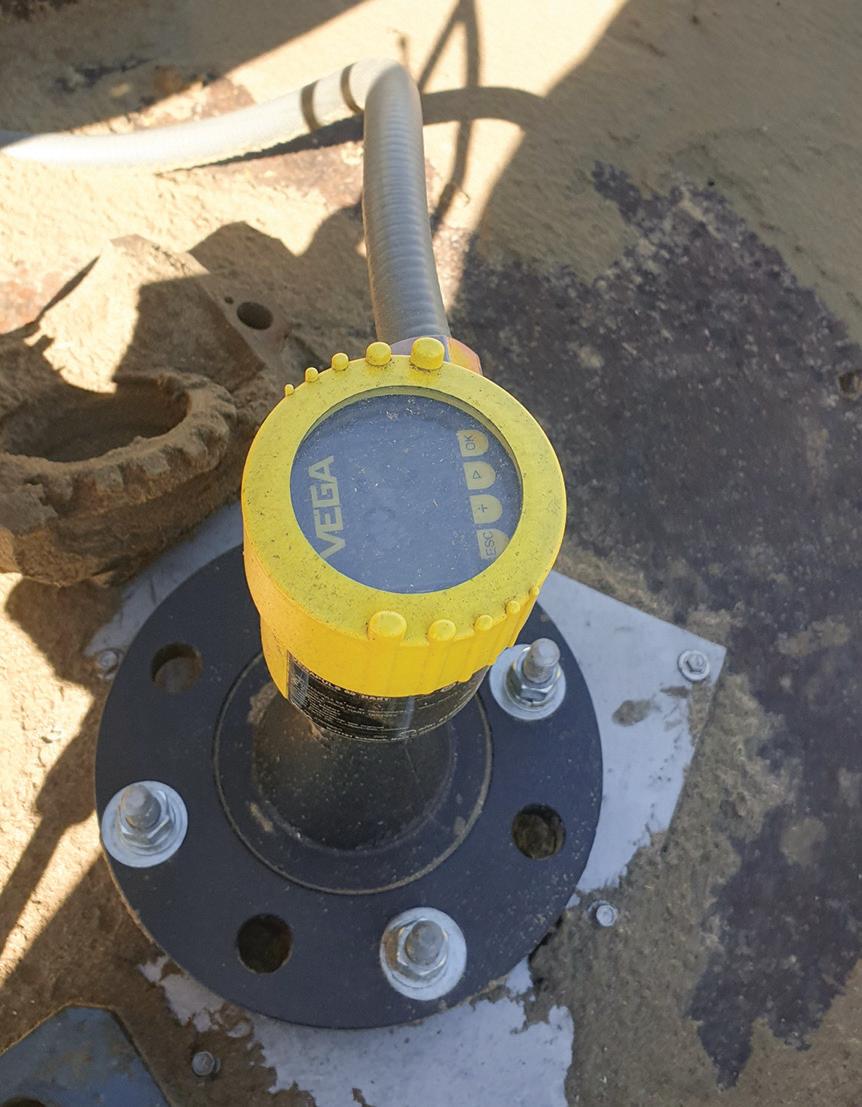
4 minute read
Detecting the invisible
When an MDF manufacturer needed a sensor that could accurately output the level of a silo containing wood flour or wood flakes, VEGA Australia’s Jim Curnow, was confident that the VEGAPULS69 Radar Level Transmitter could handle the job.
WOOD FLOUR IS THE VERY FINE
wood or particle-board dust that is used to supplement natural gas burners. Wood flakes are further separated into wood fines or wood core to make particleboard.
The fines make the particleboard surface while the coarser flakes make the particleboard core. All of these products are stored in separate silos ranging from nine to 30 metres.
As part of the manufacturing process D&R Henderson, a particleboard producer, stored the very light, very dry powder in a 21-metre silo.
However, it ran into a problem. Because wood flour is so light, fluffy and dry the traditional methods of measuring the level just simply didn’t work.
Sheeshendra Deo, Electrical Manager at D&R Henderson says finding a sensor fit for the job was a process of trial and error.
The company first tried using an ultrasonic sensor, which emits acoustic pulses to detect the level in a vessel. The light nature of the wood flour meant the pulse was being absorbed, which made the readings unreliable. On top of this, the ultrasonic sensor was affected by the airborne dust, further attenuating the signal.
“We tried a lot of sensors that just didn’t work,” he says. “The material had an extremely low dielectric, which meant it was a poor conductor of electric current.”
“Our product is also very dry. Normally these sensors depend on having some moisture there to find an accurate reading.”
Jim Curnow, a Business Development Manager at VEGA Australia says radar systems need at least some conductivity to work.
“The wood flour had such a low dielectric, it was basically invisible to the sensor,” he says.
The company tried several sensors, but none of them were able to accurately detect the material. One potential solution was to install load cells, but that would be prohibitively expensive and could be affected by the wind and other factors.
Attaining an accurate reading in the silo was vital for D&R Henderson. If the company didn’t know how much wood flour it had, it could lead to lost production while refilling the silo. Since the product supplements natural gas in the burners (which run the wood dryers), the gas cost can be huge.
Eventually, the manufacturer began testing the VEGAPULS 69, one of VEGA’s most advanced radar sensors. Wood flour was one of the materials VEGA claimed it could accurately measure.
Curnow says the 80 gigahertz radar
The VEGAPULS69 has a dynamic range of 120 decibels and can get a much better return signal from a low dielectric material. D&R Henderson stored the very light, very dry powder in a 21-metre silo.

was different to the others the customer had tried, as it has a much higher dynamic range, meaning that it was a lot more sensitive, enabling the unit to receive and process very small echoes from this type of material.
“The VEGAPULS69 has a dynamic range of 120 decibels. All of the other radars at the time were using around 85 decibels for measurement,” he says.
“The decibel scale is logarithmic. That means going from 85 to 120 isn’t just a 25 per cent increase – it’s over 1000 times more sensitive.
“That means the sensor can get a much better return signal from a low dielectric material and makes it for all intents and purposes immune to dust and buildup.”
One feature that helps protect the system from dust and buildup is the lack of a horn. Traditional Radar sensors often use a horn to focus the microwave beam into the right direction. The VEGAPULS 69 uses a lens antenna rather than a horn, removing an area where material could gather.
The sensors require no maintenance and can be set up and left alone. Integrated Bluetooth technology means the VEGAPULS69 can be programmed and integrated from the ground by site staff using their mobile phones, without the need to climb a 21-metre ladder with a laptop to make a program change.
Deo says VEGA made sure to take samples of the wood flour from the site to see if the sensors would work.
“They took various samples, and we were confident that it would work after seeing the results,” he says.
“We then began to replace all of the other sensors across the site with ones from VEGA and have close to 10 now installed.”
Curnow says the consistency of VEGA’s products is key to its success.
“They’re all German made to very high standards. I’ve been to the factory and seen the level of quality control that goes into every single step of the process,” he says.
“It’s really high tech and impressive, and it means that everything we produce will operate as it should.”




The sensors require no maintenance and can be set up and left alone.
MARTIN® CLEAN BELT SYSTEMS & SERVICES
Eliminate material carryback and increased cost of operation involving manual cleanup, damage to belts and systems, and downtime and lost production. Martin® factory-direct clean belt systems and services ensure your conveyor belts are cleaner, safer, and more productive by providing unsurpassed cleaning performance and remote monitoring with industry-leading technology, experience, and knowledge.
Learn more at martin-eng.com.au














